Summary
The Basel Foot Reliquary is a captivating artifact of religious significance dating back to the Middle Ages. It’s a reliquary, a container for holy relics, specifically designed to house a fragment of a saint’s foot. This exquisite piece of craftsmanship, made of gold and silver, adorned with precious gems, is a testament to the importance of relics in medieval religious practices. Today, it resides in the Historisches Museum Basel, a treasure trove of history and culture in Switzerland.
Get your dose of History via Email
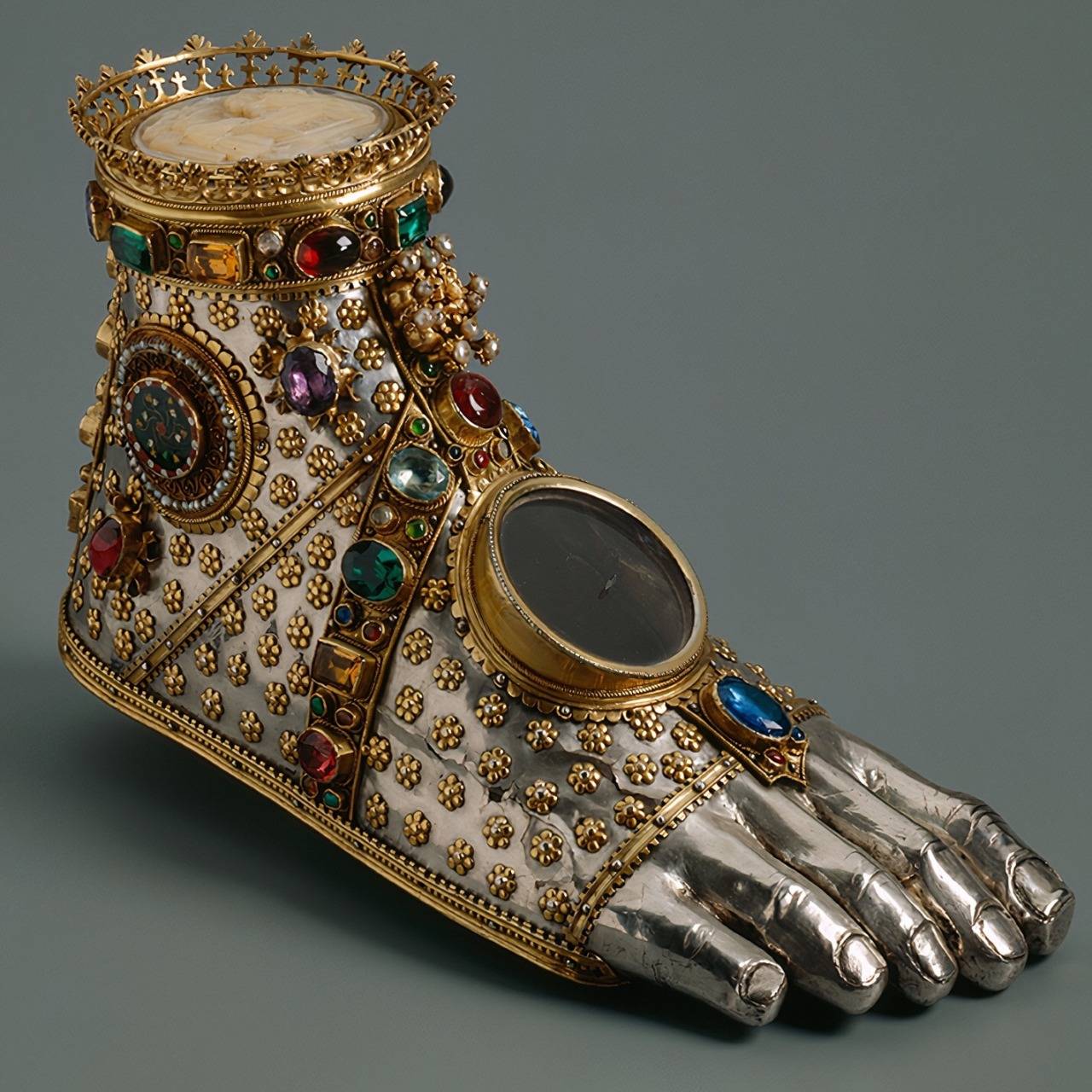
Historical Background of The Basel Foot Reliquary
The Basel Foot Reliquary is a testament to the medieval period’s fascination with relics. During this time, relics were seen as tangible connections to the divine, often believed to possess miraculous powers. The reliquary was likely created in the 11th or 12th century, a time when the veneration of saints and their relics was at its peak.
Despite its age, the exact origin of the Basel Foot Reliquary remains a mystery. It’s speculated that it was created in a prominent European metalworking center, possibly in the Rhineland or the Meuse region. The foot relic it was designed to house is believed to have belonged to a notable saint, though the identity of the saint is unknown.
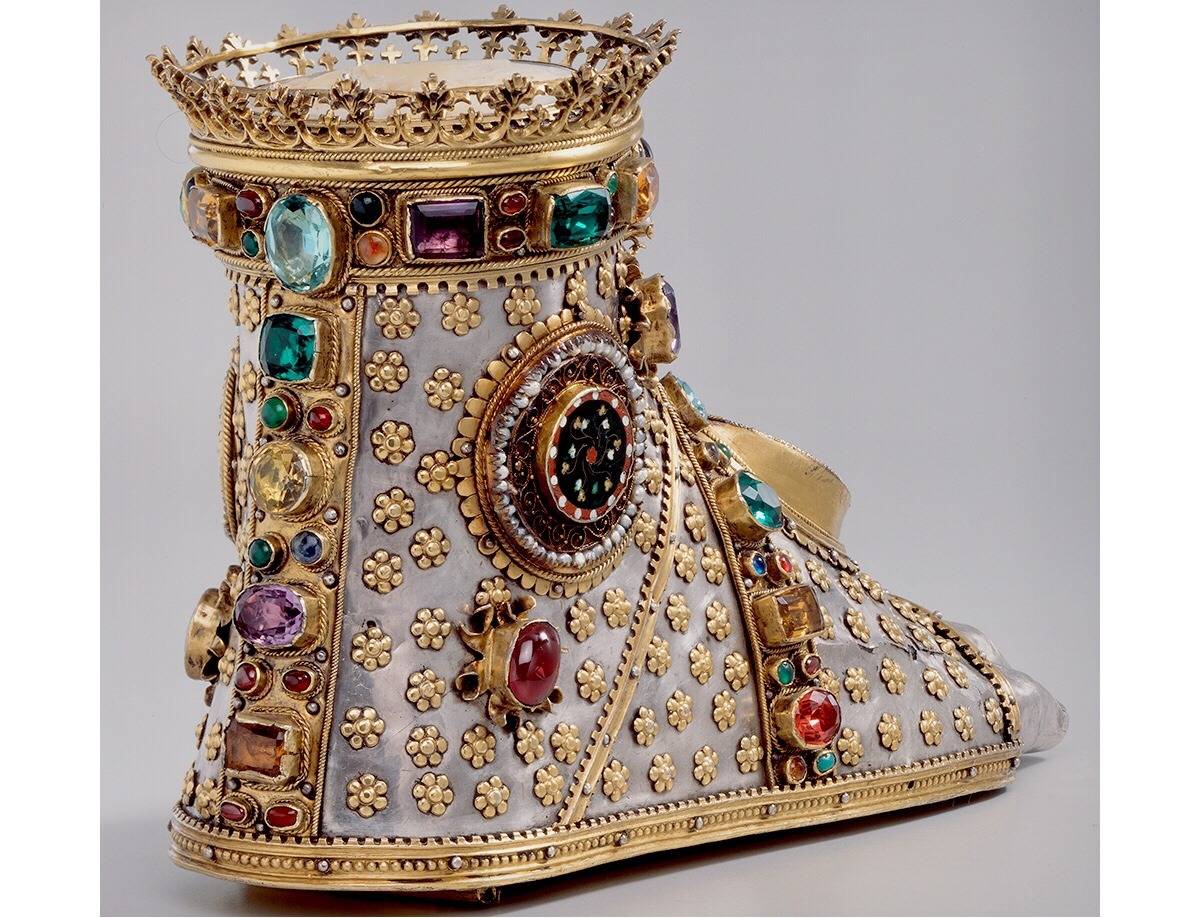
The reliquary found its way to Basel, Switzerland, likely through trade or as a gift. For centuries, it was housed in the Basel Minster, the city’s grand Gothic cathedral. However, during the Protestant Reformation in the 16th century, many relics and reliquaries were destroyed. The Basel Foot Reliquary, fortunately, survived this tumultuous period.
It was later moved to the Historisches Museum Basel, where it remains today. Despite the centuries and the changes in religious practices, the Basel Foot Reliquary continues to captivate visitors with its intricate design and historical significance.
As we delve deeper into the architectural highlights of this artifact, its beauty and craftsmanship become even more apparent.
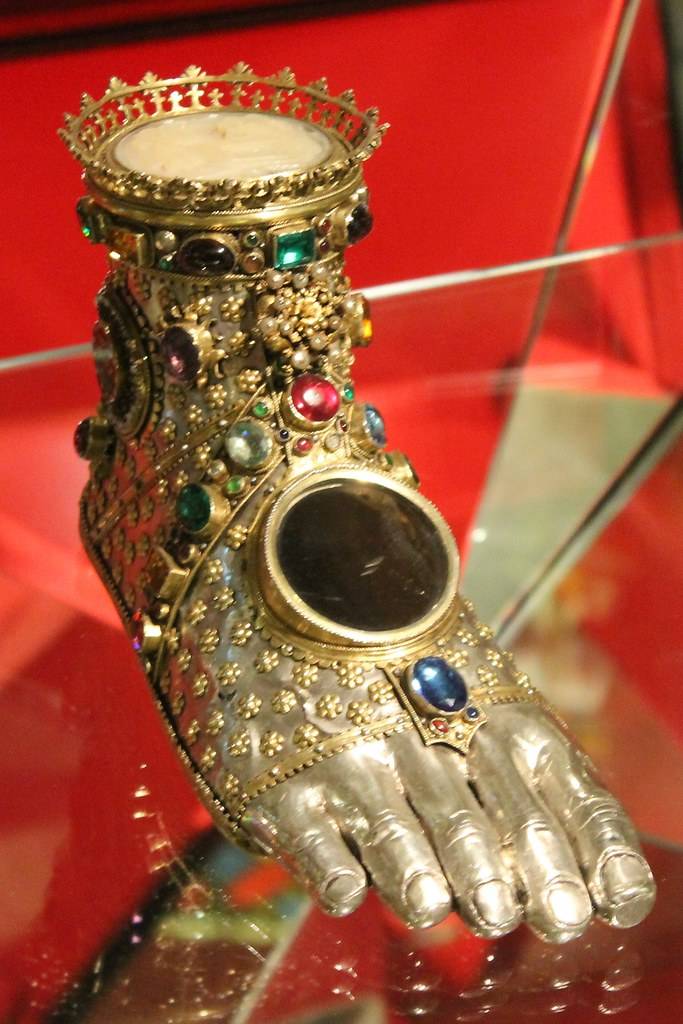
Architectural Highlights/About the Artifact
The Basel Foot Reliquary is a masterpiece of medieval metalwork. Made of gold and silver, it’s shaped like a foot, a direct reference to the relic it was designed to house. The foot is adorned with precious gems, including rubies, emeralds, and pearls, reflecting the value placed on relics during the Middle Ages.
The reliquary is also decorated with intricate engravings and filigree work, demonstrating the high level of craftsmanship of the period. The foot is depicted wearing a sandal, a common symbol of pilgrimage in the Middle Ages. This could suggest that the saint whose relic was housed in the reliquary was associated with travel or pilgrimage.
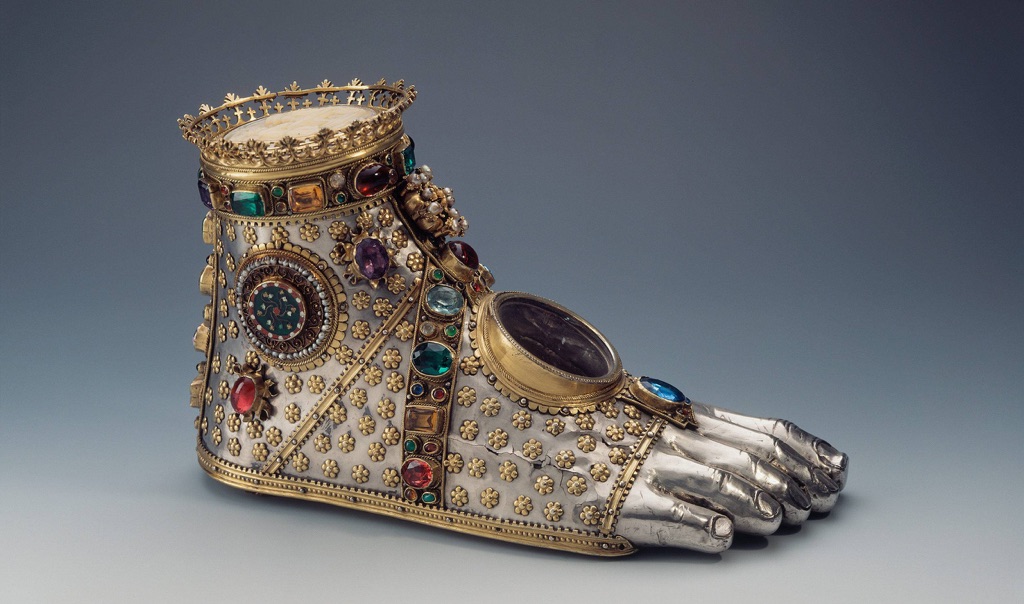
Inside the foot is a small cavity, where the relic would have been placed. This cavity is often lined with silk or velvet, further emphasizing the relic’s importance. The reliquary would have been displayed on an altar or in a chapel, allowing the faithful to venerate the relic.
Today, the Basel Foot Reliquary stands as a tangible link to the past, offering insights into the religious practices and artistic traditions of the Middle Ages. Its intricate design and historical significance make it a must-see artifact for any history enthusiast.
Next, we explore the theories and interpretations surrounding this fascinating artifact.
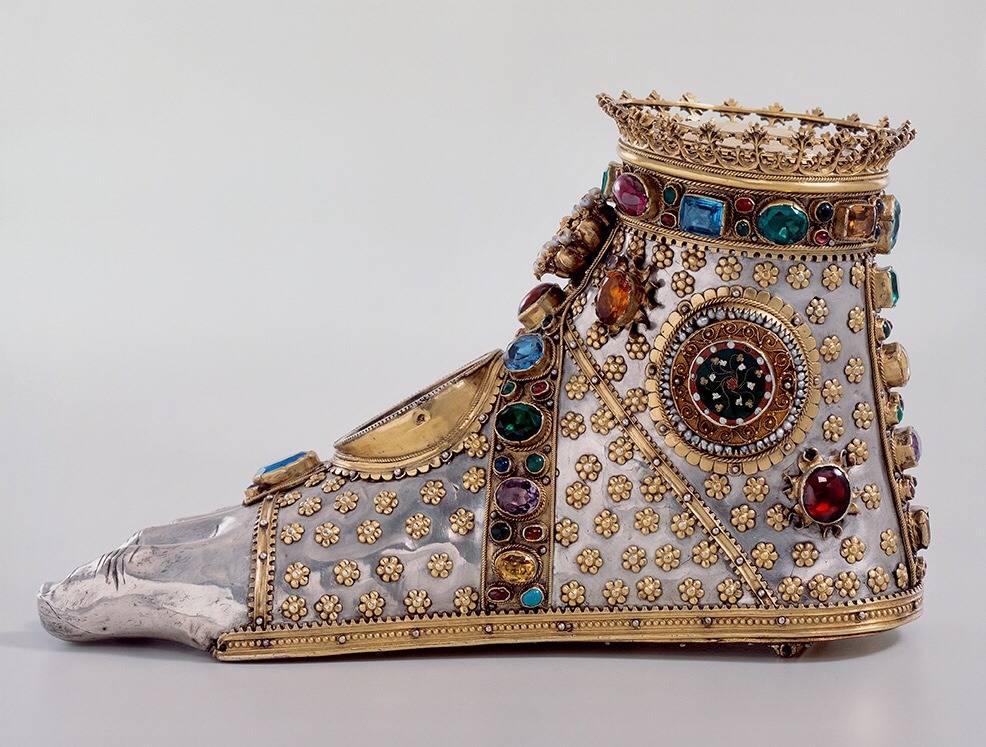
Theories and Interpretations
Despite its historical significance, many aspects of the Basel Foot Reliquary remain shrouded in mystery. The identity of the saint whose relic was housed in the reliquary is unknown. However, some scholars speculate that it could have belonged to a saint associated with travel or pilgrimage, given the depiction of the sandal on the foot.
Another theory suggests that the reliquary may have been a gift from a high-ranking church official or a wealthy patron. The high-quality materials and craftsmanship suggest that it was commissioned by someone of considerable means.
There’s also debate about the reliquary’s origin. While some believe it was created in the Rhineland or the Meuse region, others suggest it could have been made in Italy or Spain. Further research and analysis may shed more light on this question.
Despite these uncertainties, one thing is clear: the Basel Foot Reliquary is a remarkable artifact that offers valuable insights into the religious and artistic practices of the Middle Ages.
Finally, let’s look at some additional information that might be useful for those interested in this artifact.
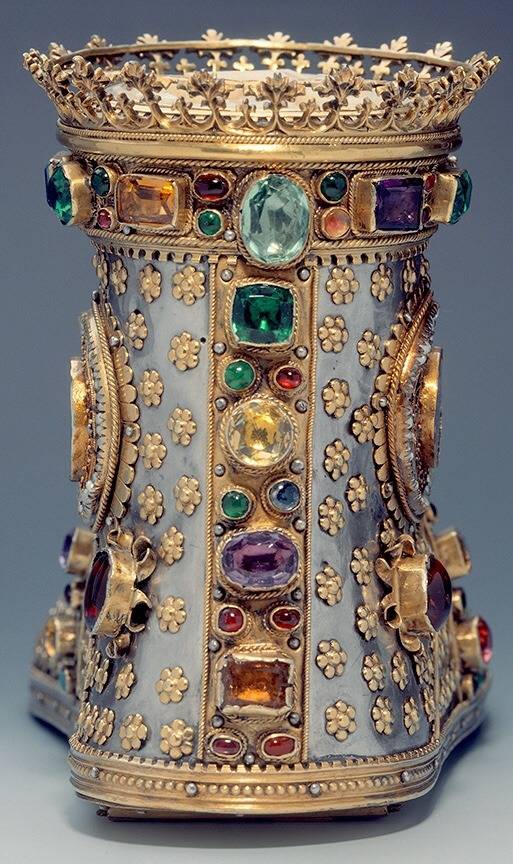
Good to know/Additional Information
If you’re planning to visit the Basel Foot Reliquary, it’s housed in the Historisches Museum Basel, one of the most important cultural and historical museums in Switzerland. The museum is located in the heart of Basel, a city known for its rich history and vibrant arts scene.
The museum’s collection spans over a thousand years of history, with artifacts ranging from archaeological finds to contemporary art. The Basel Foot Reliquary is part of the museum’s medieval collection, which offers a fascinating glimpse into this period of history.
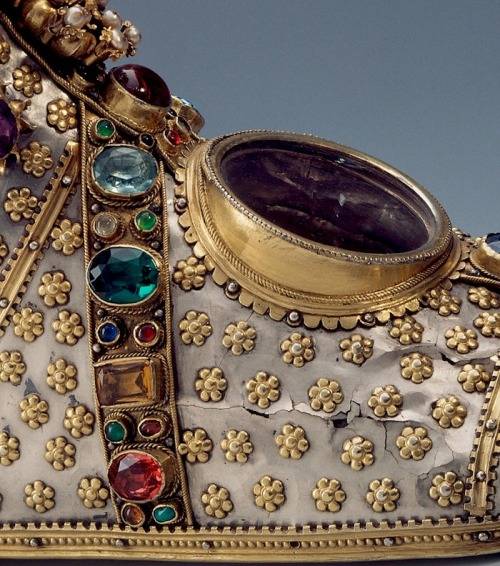
Before your visit, it’s worth checking the museum’s website for the latest information on opening hours and admission fees. Guided tours are also available, offering a deeper understanding of the museum’s collections.
Visiting the Basel Foot Reliquary is not just about viewing an artifact; it’s about stepping back in time and immersing yourself in the rich tapestry of history.
Now, let’s wrap up with some final thoughts and sources for further reading.
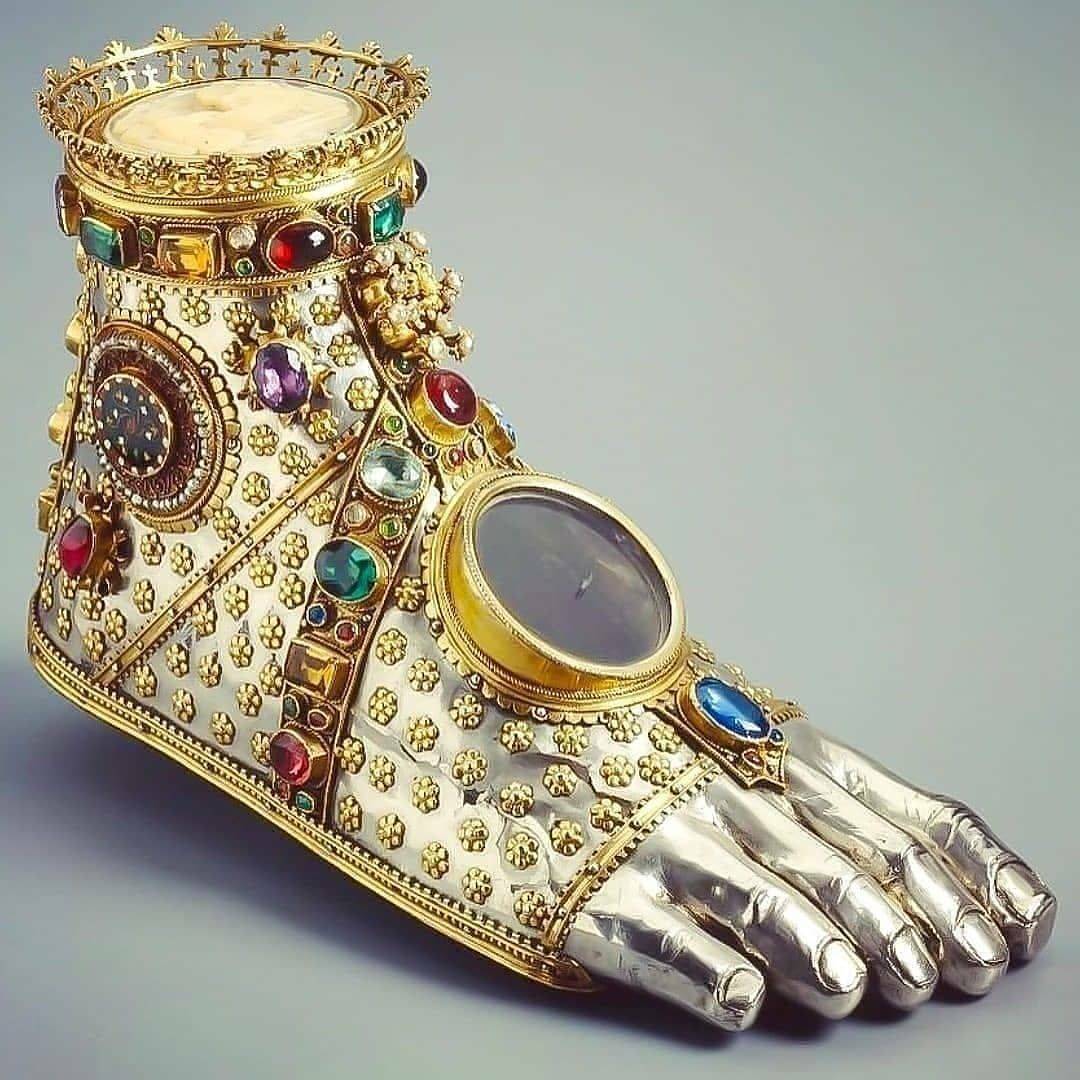
Conclusion and Sources
The Basel Foot Reliquary is a remarkable artifact that offers a window into the past. Its intricate design and historical significance make it a fascinating subject for anyone interested in history, art, or religion. Whether you’re a scholar, a history enthusiast, or a curious traveler, the Basel Foot Reliquary is sure to captivate and inspire.
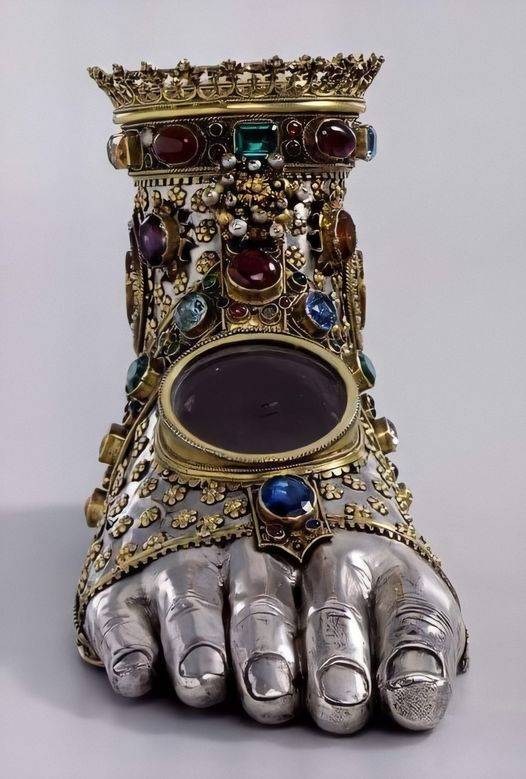
For further reading, consider these reputable sources:
FAQ on the Bezel Foot Reliquary and Related Topics
What is the Bezel Foot Reliquary?
The Bezel Foot Reliquary is a specific type of reliquary, which is an artifact designed to house and display relics, typically associated with Christian saints. This particular reliquary is shaped like a foot and is often made from precious metals and adorned with gemstones, enamels, and other decorative elements. The “bezel” in its name refers to the setting in which a gemstone is held, suggesting that the design of this reliquary might emphasize the encasement of relics in a manner similar to how gemstones are mounted in jewelry. The Bezel Foot Reliquary is notable for its craftsmanship and the significance of the relic it contains.

What is the difference between a relic and a reliquary?
- Relic: A relic is a physical object that has a direct association with a saint or a religious figure. These can be parts of the saint’s body (known as “first-class” relics), items the saint personally used (second-class relics), or objects that have been in contact with first-class relics (third-class relics).
- Reliquary: A reliquary is a container or vessel specifically designed to house and protect relics. Reliquaries are often elaborately decorated and made from precious materials, serving both as a means of veneration and as artistic objects.
What is the significance of a reliquary?
Reliquaries hold significant religious, historical, and artistic value. Religiously, they serve as a focal point for veneration and prayer, believed to bring the faithful closer to the saint and the divine. Historically, they provide insight into the religious practices, craftsmanship, and cultural values of the periods in which they were created. Artistically, reliquaries are celebrated for their intricate designs and the skill involved in their creation, often reflecting the highest standards of the art and craftsmanship of their time.
What are the body parts of a saint?
Body parts of a saint, considered first-class relics, can include bones, hair, skin, or any other part of a saint’s body. The veneration of these relics is based on the belief that the sanctity of the saint permeates their physical remains. Different cultures and religious traditions may place varying degrees of importance on specific types of relics, but all are treated with great reverence.
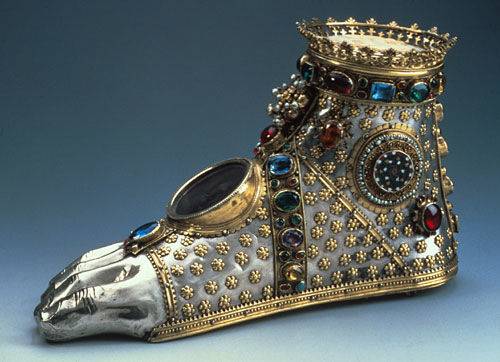
What is the Bezel Foot Reliquary value?
The value of the Bezel Foot Reliquary, or any reliquary, can be considered in several dimensions:
- Religious Value: To the faithful, its value is immeasurable as it provides a tangible connection to the divine and the saints.
- Historical Value: It offers insights into the religious practices, art, and culture of the period in which it was made.
- Artistic Value: The craftsmanship, materials, and aesthetic qualities of the reliquary make it a valuable piece of art.
- Monetary Value: Depending on its age, provenance, and the significance of the relic it contains, a reliquary like the Bezel Foot can be of considerable monetary value, especially to collectors and museums.
It’s important to note that the sale of relics and reliquaries is a complex issue, often restricted or prohibited by various religious and governmental bodies to preserve their sanctity and historical significance.
